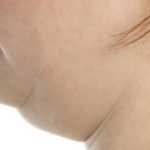What is scar revision?
Scar revision surgery will attempt to minimize a scar so that it is less conspicuous and blends in with the surrounding skin tone and texture.
Scars are visible signs that remain after a wound has healed. They are the unavoidable results of injury or surgery, and their development can be unpredictable. Poor healing may contribute to scars that are obvious, unsightly or disfiguring. Even a wound that heals well can result in a scar that affects your appearance. Scars may be noticeable due to their size, shape or location; they can also be raised or depressed, and may differ in color or texture from the surrounding healthy tissue.
Your treatment options may vary based on the type and degree of scarring and can include:
- Simple topical treatments
- Minimally invasive procedures
- Surgical revision with advanced techniques in wound closure
Although scar revision can provide a more pleasing cosmetic result or improve a scar that has healed poorly, a scar cannot be completely erased.
Scar revision is plastic surgery performed to improve the condition or appearance of a scar anywhere on your body. The different types of scars include:
Discoloration or surface irregularities and other more subtle scars can be cosmetically improved by surgery or other treatments recommended by your plastic surgeon. These types of scars do not impair function or cause physical discomfort and include acne scars as well as scars resulting from minor injury and prior surgical incisions.
Hypertropic scars
Hyperthropic scars are red, raised and thick, and grow within the boundary of the wound or incision.Hypertrophic scars often improve on their own without treatment over time, or with steroid applications or injections. If they do not respond to steroid treatment, they may be removed surgically. During this procedure, your plastic surgeon will remove excess scar tissue and reposition the incision so that it heals in a less visible pattern. This surgery may be performed under local or general anesthesia.To discourage the scar from recurring, your surgeon may inject steroids into the scar during surgery. In some cases, receiving steroid injections after surgery for up to two years may also be recommended.
Keloid Scars
Keloid scars occur when the body continues to produce tough, fibrous protein known as collagen after a wound has healed. As a result, a thick, puckered and itchy cluster of scars, often red or darker in color than the surrounding skin, may grow beyond the edges of the wound or incision.
Keloid scars are often first treated with steroid injections to reduce the size. If the scars don’t respond to injections, they can be removed surgically. This is usually an outpatient procedure, performed under local anesthesia. Following surgery, you should be back at work in a day or two, and your stitches will be removed in a few days.
It is important to note that even after treatment, keloid scars may come back larger and more visible than before. However, your surgeon can use certain methods to discourage this, such as applying or injecting steroids into the scar or administering radiation therapy. Wearing a pressure garment for a year or more may also be recommended.
Contracture Scars
Contracture scars may occur when a large area of skin is injured — typically from a burn — and the skin pulls together and puckers. The scar may restrict the movement of surrounding muscles and tendons.
Contracture scars may be treated with skin grafting, flap surgery or Z-plasty.
Skin grafting is a complex surgical procedure and typically used to treat more severe scars, such as contractures and other scars caused by burns. It involves transferring skin from a healthy part of the body (the donor site) to cover the injured area. Grafts are often taken from fatty areas, such as the thigh; for more extensive scars, grafts may be needed from many areas.
Skin grafting can greatly improve the function of a scarred area. However, it is important to note that transferred skin may not precisely match the color and texture of the surrounding skin.
Flap surgery is a complex surgical procedure in which skin, along with the underlying fat, blood vessels and sometimes the muscle, is moved from a healthy part of the body to the injured site. In some flaps, the blood supply remains attached at one end to the donor site; in others, the blood vessels in the flap are reattached to vessels at the new site using microvascular surgery.
Flap surgery can greatly improve the function of a scarred area. However, the transferred skin may not precisely match the color and texture of the surrounding skin. In general, flap surgery produces better cosmetic results than skin grafts.
Z-plasty is a surgical technique that makes a scar less visible by changing its direction so that it more closely conforms to the natural lines and creases of the skin. During this procedure, the old scar is removed and new incisions are made on each side, creating small triangular flaps of skin. These flaps are then rearranged to cover the wound at a different angle, giving the scar a “Z” pattern. The wound is closed with fine stitches, which are removed a few days later.
Z-plasty is usually performed as an outpatient procedure with local anesthesia.
Facial Scars
Facial scars can be treated in a number of ways, such as dermabrasion and Z-plasty. The simplest way of making a facial scar less visible is by cutting out the scar and closing the incision with tiny stitches, leaving a thinner, less visible scar. If the scar is located across a natural crease on your face, your surgeon may redirect the scar so that it runs parallel to these lines.
Dermabrasion involves scraping the top layers of the skin using a hand-held, high-speed rotary wheel. Although it leaves a smoother surface on the skin, it won’t completely erase your scar.
Risks
Although scar revision is a very common procedure and the risks associated with it are rare, it is very important to understand and discuss them with your surgeon before having surgery. As with all surgeries, some of the potential complications include infection, bleeding and adverse reactions to anesthesia.
You can help minimize certain risks by following your plastic surgeon’s instructions, both before and after surgery. Once the date for surgery has been set, your surgeon will provide you with specific instructions on how to prepare for surgery. These include guidelines on drinking, smoking, and taking and avoiding certain medications and vitamins. If you smoke, it is highly recommended that you stop smoking for a period of time before and after surgery.We suggest that you arrange for someone to drive you home after surgery and care for you afterward until you are feeling better.
Recovery
Recovery differs for each patient, and the healing process occurs in stages.
When surgery is completed, you will be taken into a recovery area and closely monitored. For most outpatient procedures, patients are permitted to go home after a few hours. For more complex procedures that are performed in the hospital, such as skin grafting or flap surgery, a short hospital stay may be required.
It is natural to experience some discomfort after facial scar revision surgery; your surgeon can prescribe pain medications to make you feel more comfortable. You will also experience some swelling, bruising and redness after surgery. Don’t be alarmed if your scar looks worse following surgery. It may take up to a year for its appearance to improve.






























